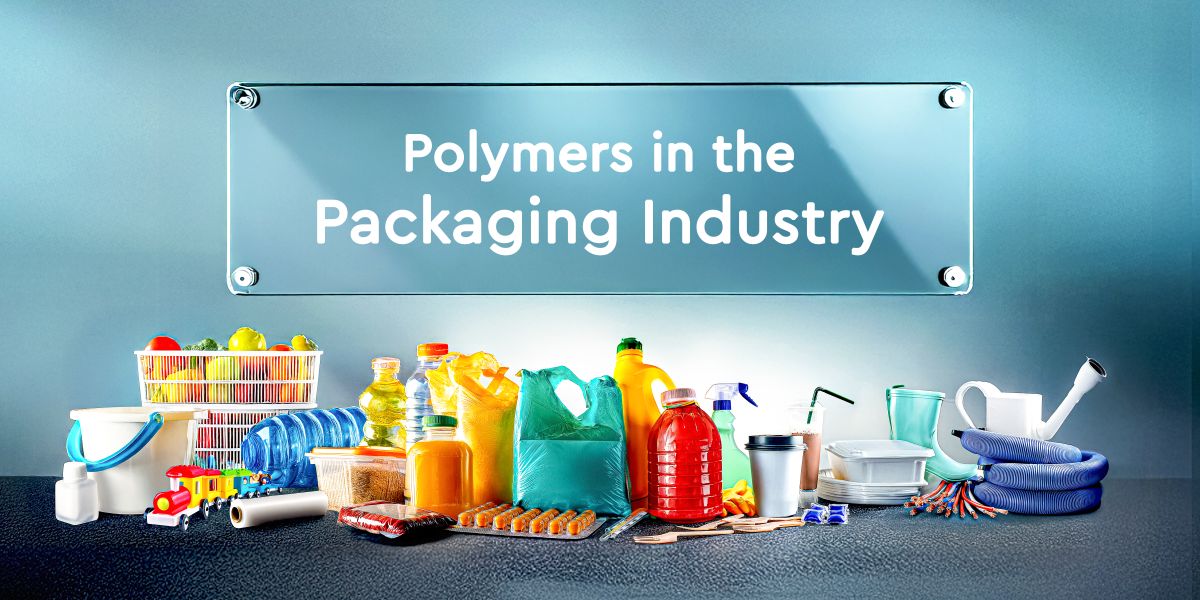The Role of Polymers in Packaging Industry: Types, Applications, Innovation, Sustainability Trends


ü
How polymers have revolutionized packaging by
offering lightweight, durable, and cost-effective solutions.
ü
Their critical role in food safety, product
preservation, and logistics.
ü
The growing debate: convenience vs.
environmental concerns.
ü
A glimpse into how the industry is evolving
toward sustainability.
1 1. Polyethylene (PE) – The
Versatile Workhorse
Polyethylene (PE)
is a widely used polymer in packaging due to its flexibility, durability, and
cost-effectiveness. It offers excellent resistance to moisture, chemicals, and
impact, making it ideal for applications like plastic bags, films, and containers.
Available in forms like LDPE, HDPE, and LLDPE, it caters to diverse packaging
needs. Recent innovations focus on recyclable and biodegradable PE to enhance
sustainability.
a. LDPE
(Low-Density Polyethylene): Used in plastic bags, shrink wraps, and flexible
food packaging.
Packaging Applications:
✔
Plastic bags (grocery, bread, newspaper bags)
✔ Shrink wraps and stretch films
✔ Squeeze bottles for condiments & cosmetics
✔ Food wraps & container lids
✔ Milk & juice pouches etc.
Properties responsible for packaging:
ü
Flexibility & Softness
ü
Transparency & Glossy Appearance
ü
High Impact & Tear Resistance
ü
Sealability & Heat Resistance
ü
Recyclability & Environmental Considerations
ü
Chemical Resistance etc.
b. Linear Low Density Polyethylene (LLDPE)
Packaging Applications:
ü
Stretch & Shrink Films
ü
Food Packaging Films
ü
Heavy-Duty Industrial Bags
ü
Liquid Packaging
ü
Consumer & Retail Bags
ü
Medical & Hygiene Packaging
Properties responsible for packaging:
ü
High Flexibility & Toughness
ü
Excellent puncture and impact resistance
ü
Thin and lightweight films
ü
Superior Elongation & Stretchability
ü
Excellent Sealability
ü
Moisture & Chemical Resistance
ü
Transparency & Clarity
ü
Lightweight & Cost-Effective etc.
c. HDPE (High-Density Polyethylene):
Packaging
Applications:
ü
Milk jugs
ü
Detergent bottles
ü
Rigid containers etc.
Why It’s Popular for packaging applications:
ü
High Impact resistance & Flexible
ü
High Strength & Durable
ü
Moisture-resistant & -resistant
ü Recyclable etc.
2.
Polypropylene (PP) – The Heat-Resistant Choice
Polypropylene(PP) is a versatile polymer known for its high heat resistance, durability, and lightweight nature. It is widely used in packaging applications that require resistance to heat and chemicals, such as food containers and takeaway boxes. PP also offers excellent rigidity and impact strength, making it suitable for caps, closures, and microwave-safe packaging. Its recyclability further enhances its role in sustainable packaging solutions.
Packaging Applications:
ü Yogurt containers
ü
Takeaway boxes
ü
Caps, and closures etc.
Properties responsible for packaging:
ü Microwave
and Heat-resistant, making it ideal for food applications.
ü Excellent
Moisture Barrier
ü High
Flexural Strength & Durability
ü Good
Sealing Properties
ü Recyclable and Sustainable packaging solutions etc.
3.
Polyethylene Terephthalate (PET) – The Beverage King
PolyethyleneTerephthalate (PET) is a lightweight, strong, and transparent polymer widely used in packaging. It is best known for its excellent barrier properties, making it ideal for beverage bottles, food containers, and thermoformed trays. PET is highly resistant to moisture and impact, ensuring product safety and longevity. Its recyclability makes it a key material in sustainable packaging efforts worldwide.
Packaging Applications:
ü
Water bottles,
ü
Soft drink bottles
ü
Food trays etc.
Properties responsible for packaging:
ü
High Strength & Durability
ü
Transparency & Clarity
ü
Excellent Barrier Properties & Chemical
resistance.
ü
Heat Resistance & Thermal Stability
ü
Food-Grade Safety etc.
4. Polystyrene – The Protective Layer
Polystyrene (PS) is a durable, lightweight polymer known for its high heat and chemical resistance. It is commonly used in food packaging applications like yogurt containers, takeaway boxes, and microwave-safe products. PS offers excellent rigidity and impact strength, ensuring long-lasting performance. Its recyclability and ability to withstand repeated use make it a sustainable packaging option.
Packaging
Applications:
ü
Food packaging
ü
Disposable cups
ü
Protective packaging for electronics etc.
Properties responsible for Engineering in packaging
applications:
ü
Excellent Insulation properties
ü
Lightweight & Cost-Effective
ü
High Rigidity & Strength
ü
Shock Absorption & Cushioning
ü
Lightweight & Cost-Effective etc.
5.
Polyvinyl Chloride (PVC) – The Strong but Controversial Plastic
PolyvinylChloride (PVC) is a strong, durable polymer known for its excellent clarity,
chemical resistance, and flexibility. It is widely used in packaging
applications such as blister packs, cling films, and pharmaceutical packaging.
PVC provides a strong barrier against moisture and contaminants, ensuring
product safety. Though recycling challenges exist, innovations in sustainable
PVC alternatives are emerging.
Packaging Applications:
ü
Blister packs & Pharmaceutical packaging
ü
Medical packaging
ü
Cling films etc.
Properties responsible for usage in packaging
applications:
ü
Moisture & Gas Barrier Properties
ü
Thermoformability
ü
UV & Weather Resistance
ü
Recyclability & Sustainability
ü
High Strength & Durability
ü
Chemical & Oil Resistance etc.
Sustainability and the Future of Packaging Polymers
Advanced Recycling Technologies:
Innovations like chemical recycling and closed-loop systems are
transforming waste into valuable resources. These technologies enable the reuse
of polymers without degrading quality, supporting a circular economy in
packaging.
Brand Commitments:
Leading brands are pledging to use sustainable packaging materials,
reduce plastic waste, and improve recyclability. This shift is driven by
consumer demand and corporate responsibility, pushing the industry toward
eco-friendly alternatives.
Government Regulations:
Global policies and bans on single-use plastics are accelerating the transition
to sustainable polymer packaging. Regulations are encouraging R&D
investment in biodegradable, compostable, and recyclable materials.
Get Involved
Join the movement toward sustainable packaging! At Somochem,
we're driving innovation with eco-friendly polymers. Explore our solutions and
partner with us to shape a greener future.
Conclusion
Polymers are powering the next-gen packaging revolution—from
performance to planet-friendly. At Somochem, we're proud to be part of the
change. Discover how we’re making it happen.